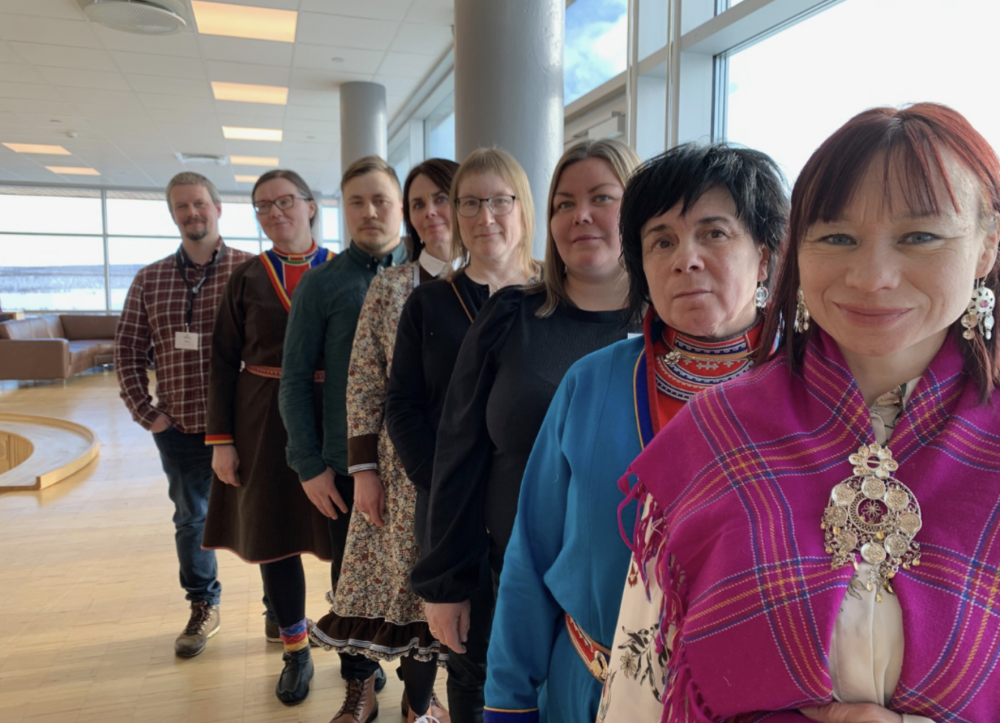
Photo: Eilís Quinn / Eye on the Arctic
By Eilís Quinn
It’s a mild winter morning in the Arctic Norwegian town of Alta, but at the Altta Siida kindergarten, it’s a hub of activity. Outside, snowsuit-clad children run and play in the snow. The grounds are dominated by the school’s lavvu, a traditional Sami shelter. Inside, reindeer skins line the ground around an open fire. Throughout the morning, children dart in and out of the tent, playing, eating their morning snacks and giggling with a caregiver.
“We had the [lavvu] before, but until the SaMOS project, we just didn’t use it,” Karen Anne Marit Buljo, one of the school’s assistants, said. “But now, we do. The children eat here, they play here and they’re allowed to come here anytime they want. And many prefer to be here.”
The Sami manat odda searvelanjain – Sami children in new education rooms project, known as SaMOS, started in 2017 to provide culturally relevant early childhood education for Sami children.
The project had a clear and specific immediate goal: to prioritize Sami language and traditions in this education. But those involved in the project say it was also about something much bigger—challenging the legacy of colonialism in Indigenous education in Sapmi, the traditional Sami homeland in northern Europe, and help undo the decades of Sami language loss.
“It hasn’t always been easy to talk about the word ‘decolonization’ in Sapmi, even amongst Sami, because we’ve all been through the Swedish, Norwegian and Finnish education systems and have been taught in those schools that the Nordic countries are completely democratic and that there’s no colonization at all,” Ol-Johan Sikku, the SaMOS project leader, said. “But that’s changing, and now we can talk about it in a way we couldn’t before.”
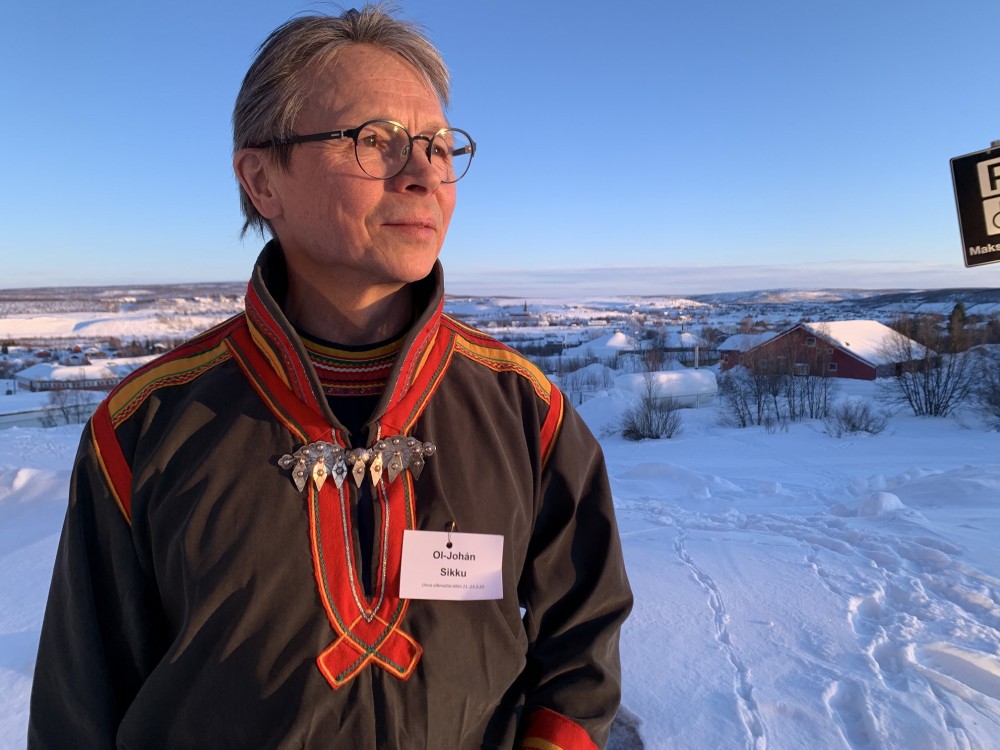
You can’t teach Sami language and culture through the Norwegian language and education system. We have to go back to how our language and culture was successfully transmitted from generation to generation for thousands of years. Ol-Johan Sikku, the SaMOS project leader
Sami languages in danger
The Sami are an Arctic Indigenous people. There is no census just for Sami but their numbers are estimated to be between 100,000 to 150,000. Their traditional homeland stretches across Arctic Finland, Sweden, Norway and Russia’s Kola Peninsula.
There are many Sami cultures including livelihoods based on the sea, hunting and reindeer herding, or combinations of all three. Traditionally, many Sami migrated east to west with the seasons in the Nordic region. The closure of national borders in the 1800s and first half of the 1900s caused hardships for many, both splitting up families into different countries as well as cutting herders off from seasonal grazing areas they were no longer allowed to travel to.
Policies in Sweden, Finland, Norway and Russia also often involved the education system and church discouraging or actively suppressing Sami languages and culture and forcibly assimilating Sami children into the dominant culture, something that continues to negatively impact Sami languages and education today.
There are numerous Sami languages and dialects spoken across the Sami homeland but according to UNESCO, all are in danger. Their classifications range from “definitely endangered” for North Sami, the most widely spoken Sami language with most estimates averaging around 25,000 speakers; to “critically endangered” for Pite Sami which is said to be extinct in Norway but is believed to still have around 30 speakers in Sweden.
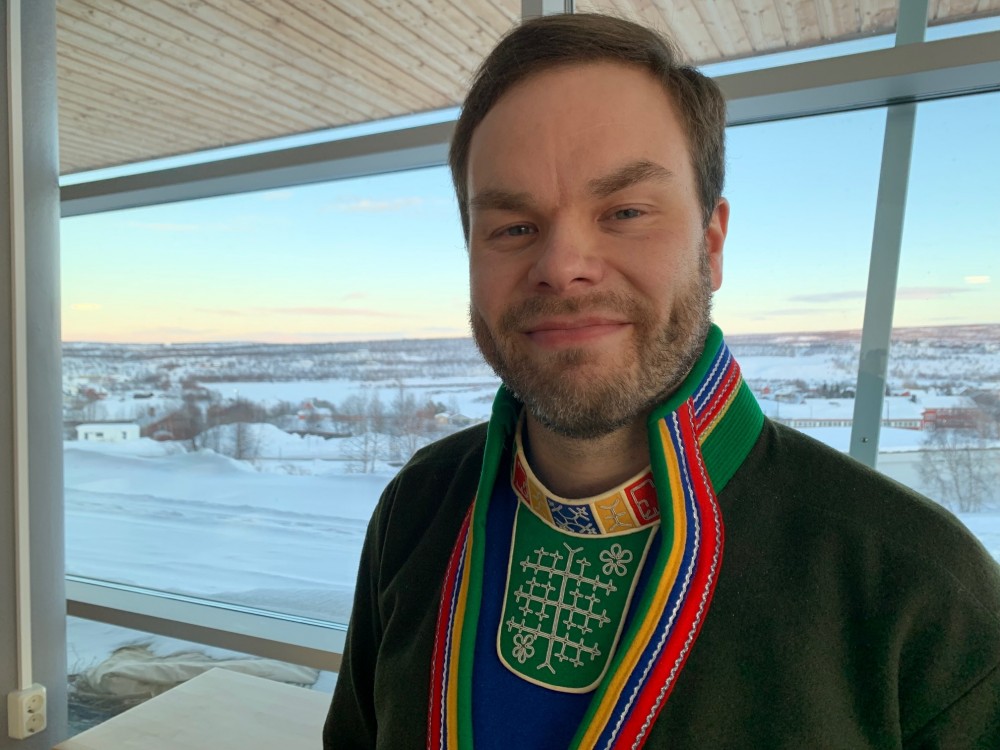
SaMOS is the first project that’s connected the Sami Parliament, the university, and the kindergartens together talking about this education, and that’s historical for us.Mikkel Mikkelsen, an MP in the Sami Parliament in Norway
Mikkel Mikkelsen, an MP in the Sami Parliament in Norway, says a laser-focus on early childhood education, like with the SaMOS project, is needed to help turn things around.
“There’s a 60 per cent drop out rate in some Sami language subjects, and there’s anecdotal experience that some Sami students are not full Sami speakers when they finish secondary school,” Mikkelsen said. “If the numbers of students stay at the levels they are today, we expect a decline of Sami speakers by 60 per cent in the future.
“The Sami language has to be taught in early childhood or chances are very slim of catching up later.”
“Responsibility is an important part of bringing up Sami kids.”
The SaMOS project involved both the Sami Parliament in Norway, which funded the initiative with 5-million krone a year (approximately $645,000 CDN) and the Sami University of Applied Sciences, located in the Arctic Norwegian village of Kautokeino, referred to locally by its Sami name Guovdageaidnu.
The project was piloted in four Norwegian kindergartens of which Altta Siida was one.
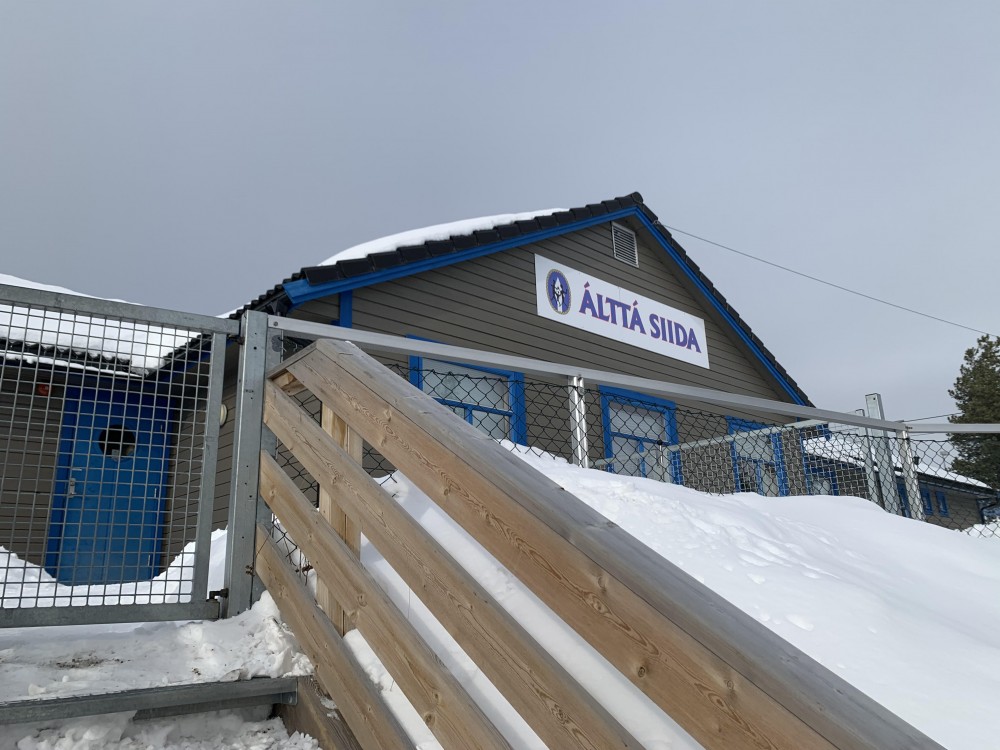
The SaMOS project has awakened our thinking to be more conscious of working with the Sami pedagogy.Per Isak Vars, a pedagogical leader at Altta Siida
Altta Siida has 47 children, six years old and younger, and 15 employees and uses North Sami as the language of instruction.
In March, Buljo, along with two colleagues from Altta Siida, presented their experiences with SaMOS at the Sami University of Applied Sciences along with the other three participating schools: Veajage, a kindergarten in Drag, a village in the Lule Sami area of northern Norway, Suaja Maanagierte located in Snana, a South Sami kindergarten in central Norway, and Badjemanaid Beaiveruoktu located in the Arctic community of Karasjok, 18 kilometres from the Finnish border.
The three-day conference was devoted to exploring experiences with the initiative, their implications for early childhood education and how the findings may be further implemented.
“Without this SaMOS project I don’t think we’d have been working the way we did and teaching the kids traditional work,” Per Isak Vars, a pedagogical leader at Altta Siida told the conference.
“The SaMOS project has awakened our thinking to be more conscious of working with the Sami pedagogy.”
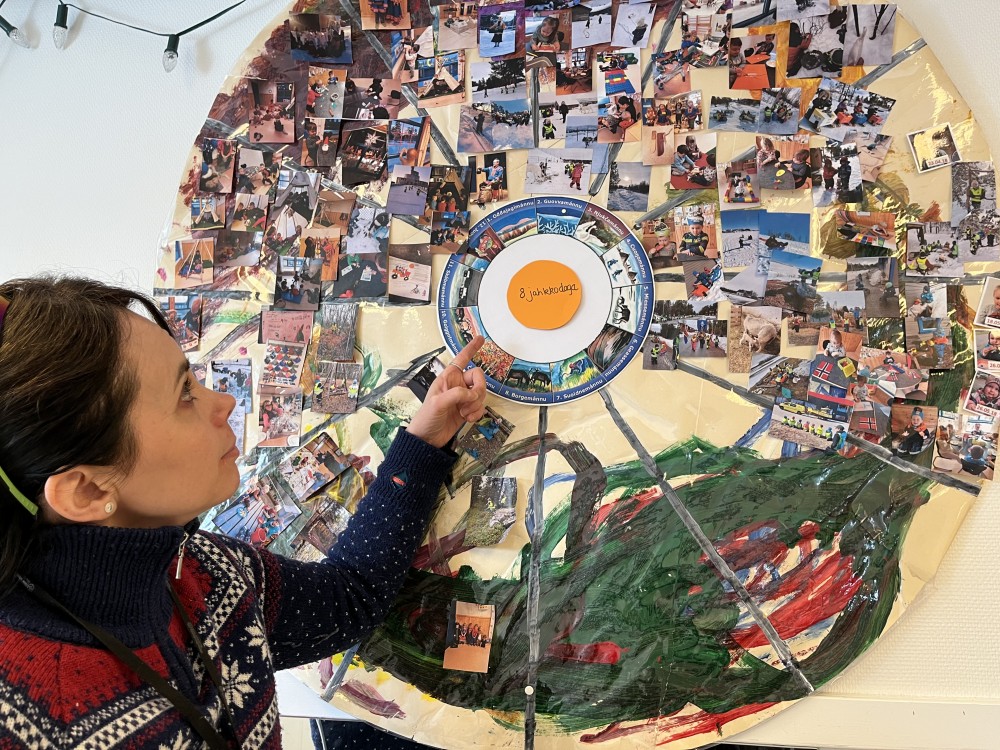
Buljo said that putting Sami ways of instructing front and centre left a huge mark.
“We gave them responsibility and showed them trust when we chopped wood, made fire in the lavvu and realized the kids should make the fire themselves,” she said. “Before they would only be involved indirectly because we were worried about what the parents would say if the kids were playing with the fire, but now we know this kind of responsibility is an important part of bringing up Sami kids.”
The vocabulary and language skills learned by doing traditional Sami activities is hard to overstate, she said.
“We even had one child that didn’t speak Sami when he came, but now he’s started to. It’s good to see there’s hope for those kids, even if they don’t speak Sami in the beginning.”

The guiding philosophy for SaMOS was to build it from the ground up based on Sami values and ways of thinking. This started from the beginning with everything from how the project arrangement was officialized, to how it was discussed with the kindergarten employees, to how it was implemented in the classrooms.
The agreement between the Sami Parliament in Norway and the university, was signed and placed in a giisá, a traditional Sami box that holds a family’s valuables, before it was archived in the computer system.
“Yes it’s symbolic, but we were all aware that this project from beginning to end must be in the Sami way, and not the normal western structure and hierarchy,” Sikku said. “As far as we know, this type of project has never been organized this way before.”
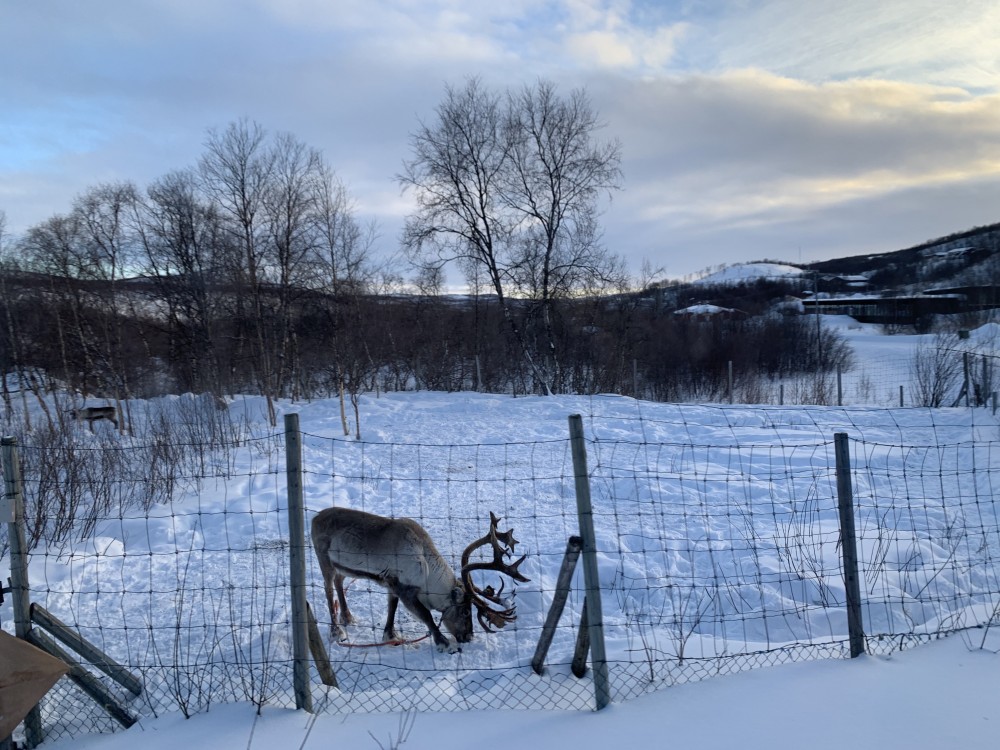
Anne Ingebjorg Svineng Eriksen, a teacher in Sami pedagogics at the Sami University of Applied sciences, was one of the people who worked with the kindergarten educators on the project.
Eriksen said even at the beginning stages, they realized they had to reorganize the way they were sharing information.
“Our first SaMOS session to the kindergarten employees consisted of lectures with one Power Point presentation after another, and we quickly discovered that this form of teaching did not work very well,” Eriksen said.
“A form of teaching based on Sami values and thinking is to provide space for self-reflection, discussions and active participation. Narratives and stories from day-to-day kindergarten were a better way to do this and are more in line with Sami values and understanding.”
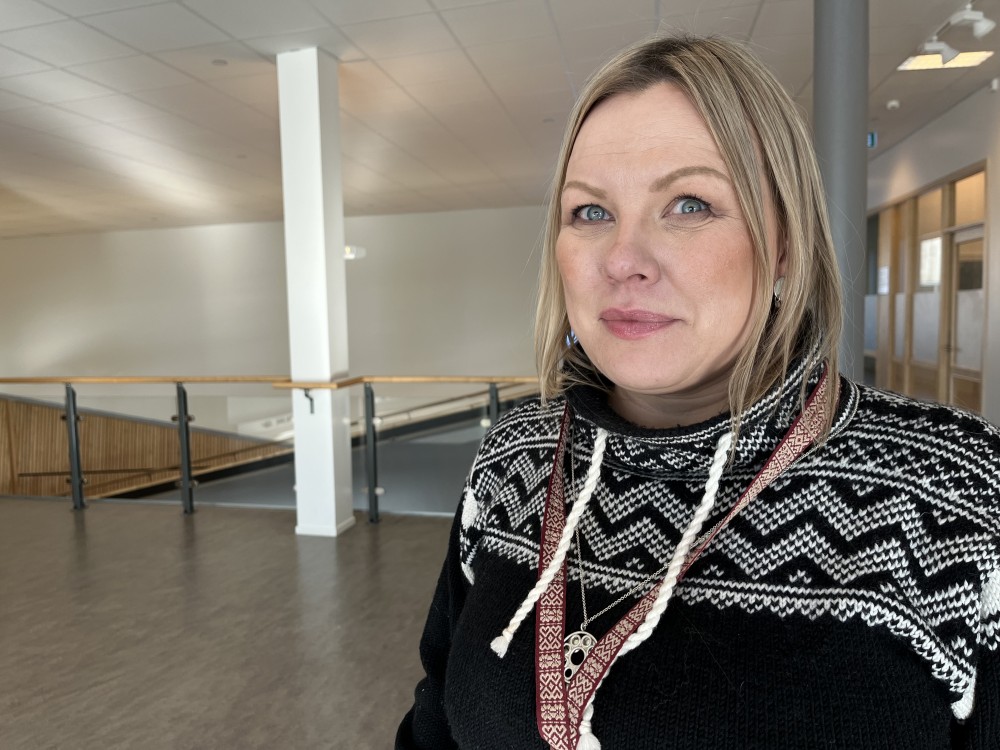
Decolonization is not just a process between the state and the Sami, it’s also a process we need to undertake inside us in order to decolonize our minds.Laila Susanne Vars, the rector of the Sami University of Applied Sciences
An important part of the SaMOS project was also getting the kindergarten workers to reach back into their own childhoods and think of how Sami language and culture had been transmitted to them.
“We’re building strong education institutions, but we still have a way to go in believing in our own strong Sami pedagogical thinking in the way we teach, and in the way we were taught by our grandparents,” Laila Susanne Vars, the rector of the Sami University of Applied Sciences, said.
“We need to systemize it, do research on it, and implement it into our schools and make sure we’re proud of it, so we can use that as a foundation for our dialogue with ministries and use that framework for all that we do.”
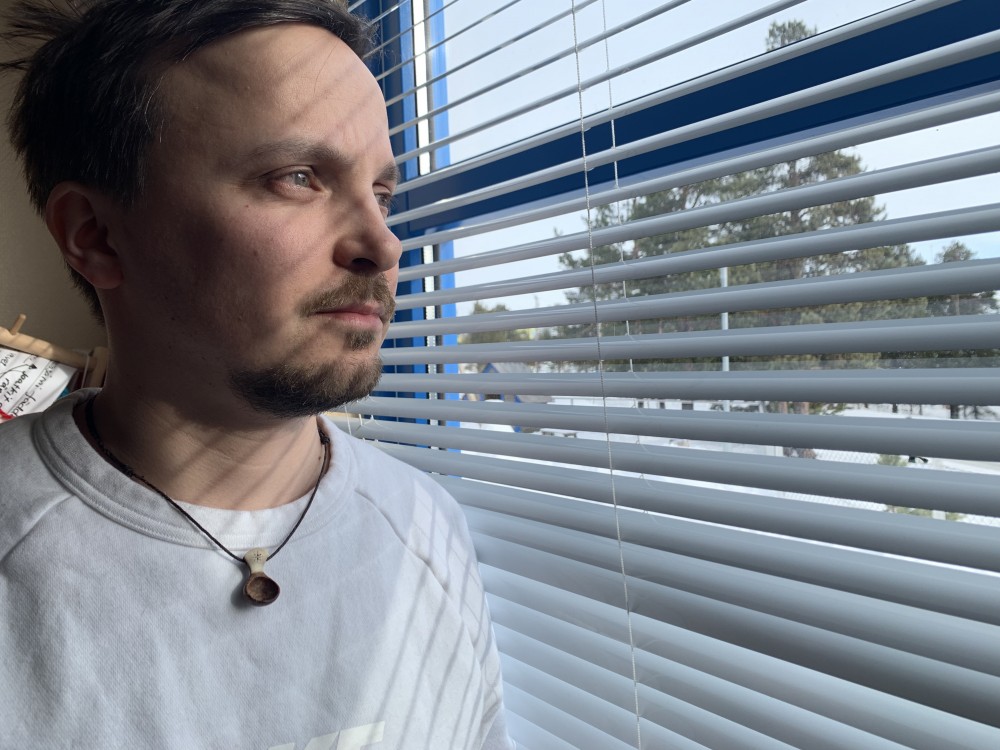
I was very excited that my son got to be part of it.David Labba, a pedagogical leader at Altta Siida, whose four year-old son Joel Ante was part of the SaMOS project.
David Labba, a pedagogical leader at Altta Siida, stressed the significance of SaMOS lessons in shining a light on Indigenous language and practices within a dominant culture
“It’s easy, even for a kindergarten like us that was already strong on Sami language and activities, to be influenced into maybe Norwegian or western ways of thinking or doing things, just because the culture is so omnipresent on TV and iPads and everywhere,” Labba said.
“You don’t even realize it until one day you sit down and realize ‘Wait, that’s not the way we should work and teach our kids here.’”
Labba said examples range from concrete things like prioritizing making Sami decorations for the classrooms that teach children about their culture and associated vocabulary, to more abstract things like putting less focus on the individual and instead stressing the collective and working together to solve problems whether in an activity or if a child is upset.
Labba, whose son Joel Ante, 4, was in the SaMOS class, said he was thrilled with the project both as an educator and as a parent.
“I was very excited that my son got to be part of it.”
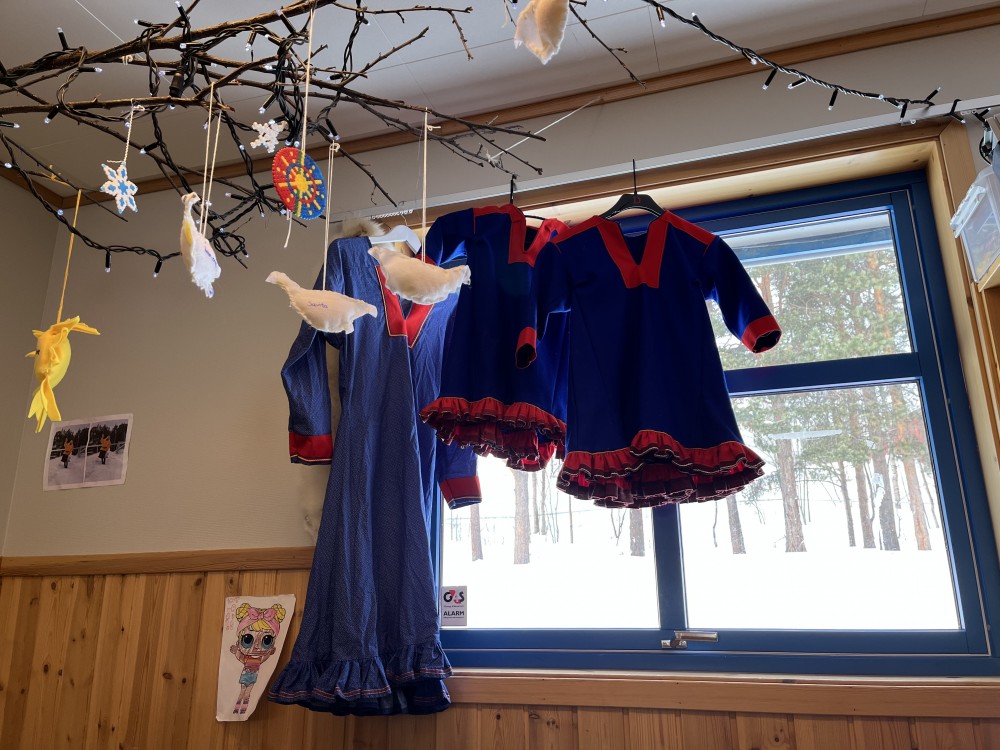
Laila Susanne Vars highlighted SaMOS’ strength in promoting individual teachers’ childhood experiences, and teachings from elders and community members.
“The Norwegian, Finnish and Swedish education systems very much influence the way we think about education, teaching and pedagogical teaching at universities,” she said.
“That’s why decolonization is not just a process between the state and the Sami, it’s also a process we need to undertake inside us in order to decolonize our minds and start rethinking our own education system to incorporate Sami values, ways of thinking and traditional knowledge in everything we do.”
SaMOS’s leader Ol-Johan Sikku agrees, saying early childhood education steeped in Sami culture and language is one of the best bulwarks against assimilation, by giving children pride and teaching them to value their Indigenous heritage. He says that’s part of what made working on SaMOS so meaningful to him, both professionally and personally.
“I grew up in a traditional family on the Swedish side of Sapmi, studied economics at Umea University and was engaged in different things like organizing the Sami parliament in Sweden and it was all really nice,” Sikku said.
“But I felt something was wrong and realized later it’s because I had high status in the Sami community, not because of my skills as a Sami, but because I had Swedish manners and a Swedish education. In my opinion, this is wrong and is not how it should be.”
Working cross-border
At the beginning of the project, the Sami parliaments in Finland and Sweden applied for EU funding to launch SaMOS in their countries simultaneously with Norway, but their applications were denied.
Now that the pilot portion of the project has wrapped up, next steps include developing ways to easily share the SaMOS findings and processes, not only across Norway, but eventually in Finland and Sweden as well.
Annika Pasanen, a professor of Sami sociolinguistics at the Sami university, was involved in a working group that submitted a report used in the SaMOS project on the importance of strong language models for language learning.
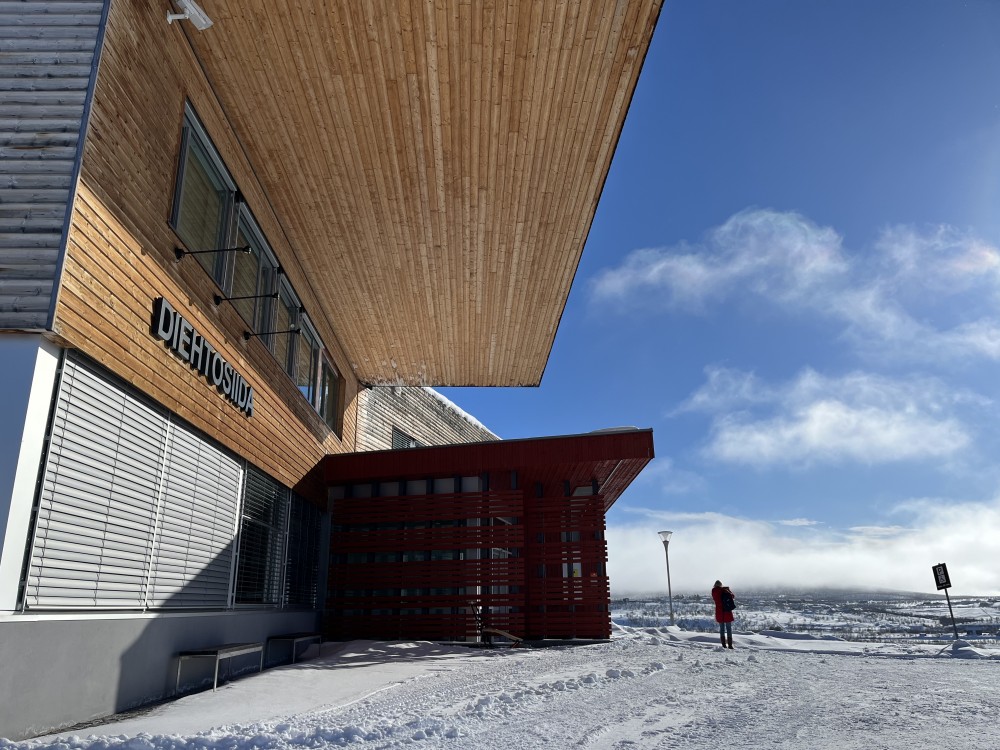
She said efforts need to continue to standardize Sami pedagogical terms.
“Nowadays, “language immersion” can refer to basically anything in practice, from one hour a week language learning to total immersion and “In the context of language planning, it’s very harmful because educators, parents, politicians etc have to understand that in language acquisition, certain methods can lead to certain results,” Pasanen said. “For instance, one hour a week can lead to mostly symbolic learning of an endangered language, whereas total immersion enables effective acquisition and intergenerational language transmission.
“We should have common concepts of Sami early childhood education all over Sapmi. Everyone should know what “Sami kindergarten” or “language immersion” or “language nest” means, what the role of Sami language is, which methods are used, what kind of results are to be expected and they should be understood and systematically used in all Sapmi.”
Filling the teacher shortage
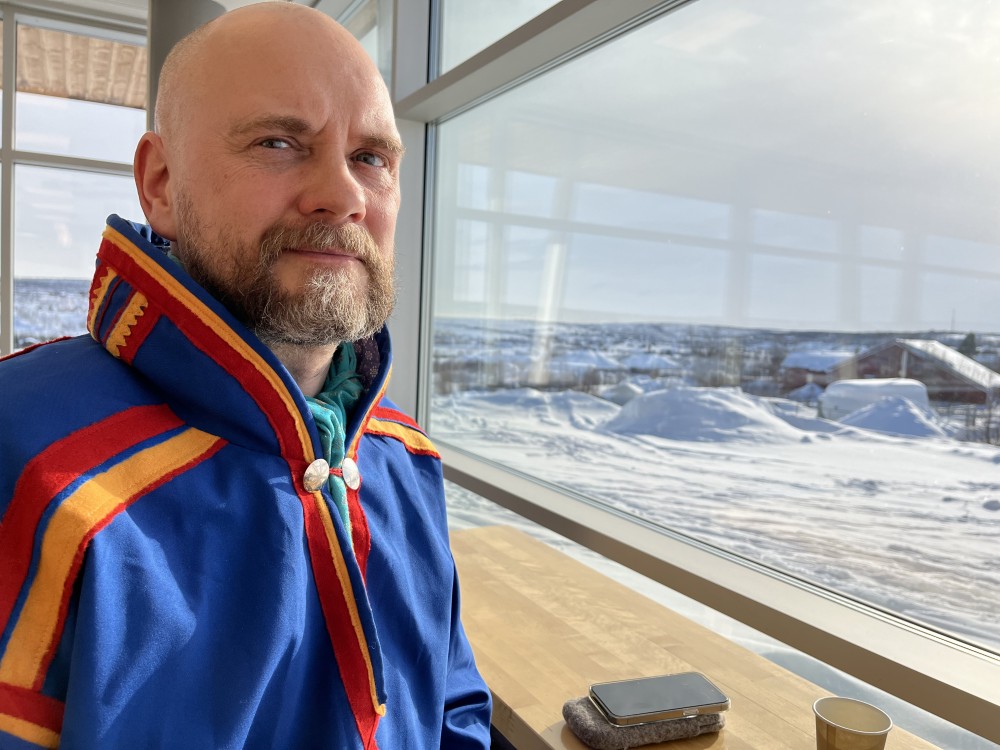
Currently, there are two Sami language high schools in Norway, one in Kautokeino/Guovdageaidnu and one 125km east in the village of Karasjok. Together, they graduate approximately 100 Sami-speaking students a year.
Sami education experts say there’s high competition for those graduates amongst post-secondary institutions and attracting a portion of them to education careers is a challenge.
“A lot of young people don’t want to be here because it’s too small, they want to go to Tromso or Oslo for their education and it’s not always possible to get them to come back,” Sikku said.
Vars agrees.
“Here at the Sami university we’re trying to recruit as many students as possible to the Sami teacher education because we really need them,” she said. “But we often find ourselves in competition with other institutions.”
Truth and Reconciliation
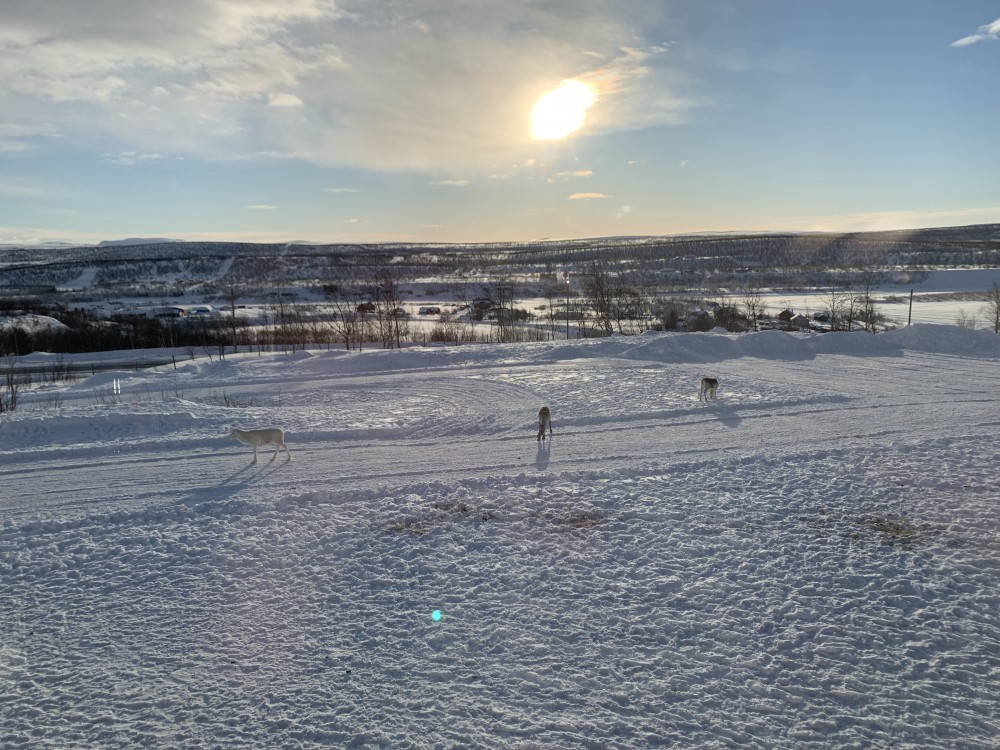
Vars says that initiatives like SaMOS are important reminders of what can happen when Sami people and institutions at all levels pull together, something especially important as Norway goes through the Truth and Reconciliation process. (The final report is expected to be released in June.)
Separately run Truth and Reconciliation Commissions are also underway and at varying stages in both Sweden and Finland.
“It’s a challenge addressing Truth and Reconciliation through three separate processes because it doesn’t take into consideration that we’re living in four different nation states, with different legislation and policies,” Vars said.
She says this, among other issues, leads to disparities in Sami language and education even within small geographical areas.
“Because of the border closures, you can have a family with one part living on the Swedish side of Sapmi and another part on the Norwegian side, but that one family faces different regulations and rights when it comes to education for instance.
“So when it comes to the importance of “samifying” education, and people ask if it’s really worthwhile, the answer is ‘Yes’. SaMOS is a perfect example of what happens when you put together the Sami Parliament, the Sami university, the Sami kindergartens and the municipalities and have a very powerful unity and collaboration. If we could also do this when it comes to other things like hunting and fishing and other rights issues I think it would be more difficult for the state to divide and conquer us.
“We’ve had our share of that, but now it’s time to have a strong front.”
This story is posted on the Barents Observer as part of Eye on the Arctic, a collaborative partnership between public and private circumpolar media organizations.
dsafg
Translating Swahili language and
knowledge in colonial and post-
colonial Tanzania
UNIVERSITY OF CHICAGO PRESS JOURNALS
Translating Swahili language and knowledge in colonial and post-colonial Tanzania
In the 1940s, a student from Kenya named James Gekonyo applied to the Chemistry Department of Makerere University in Uganda. When his admissions interviewers asked him to explain the difference between a solid, liquid, and gas, Gekonyo said: “I can hold a solid in my hand and it will stay there; a liquid will run to the floor, and I cannot hold a gas at all.” Gekonyo was denied admission—his answer was deemed “silly” by the interviewers.
Gekonyo’s interview is just one example of how both interlinguistic and intralinguistic translation can falter and succeed, writes Morgan J. Robinson. In the article “When a Wonder Is Not a Wonder: Swahili, Translation, and the Communication of Knowledge,” published in Isis: A Journal of the History of Science Society, Robinson explores these questions within the context of the translation of Swahili language and knowledge during the colonial and postcolonial periods in Tanganyika/Tanzania.
Swahili has been a recorded written language for centuries and traces its roots back over 1,200 years, but colonial-era European academics became interested in the language because they inaccurately believed it represented an early stage of linguistic development. Despite this perception, when British missionaries began working on Zanzibar, they soon set to learning Swahili. They devised a way to write it in Latin script and produced dictionaries and a language handbook, learning the language from—among others—an eminent Islamic jurist, his associates, and the mission’s students. Translation occurred through this web of interlocuters who suggested, affirmed, and revised word lists until all understood.
Yet even as missionaries attempted to codify Swahili, their students shaped it to fit their needs. Robinson cites, for example, the word “kuchenja”—a hybrid the students created of the English word “to change” and the Swahili verb prefix “ku-.” This “linguistic flexibility and creativity,” Robinson writes, demonstrates “that translation was rarely as simple as moving between a source and a target language—both of which were perpetually in flux.”
As Britain consolidated its colonial rule in the 1920s, the administration formed a committee to standardize written Swahili into a “developed” language. It sought to insert the language of science into Swahili (deemed impossible by some) while creating dictionaries and coining new words. The committee was occasionally “confronted by the fact that not only is language a moving target, but so, too, is knowledge.”
With the dawn of the independence era, translation problems and solutions began to be framed differently, Robinson writes. Tanzania’s first president Julius Nyerere used Swahili as an anti-colonial rallying cry and symbol, stressing the connection between the language and the nascent nation. Swahili proved to be a potent national symbol and provided some solutions to translation problems experienced during the missionary and colonial eras. The author of a science column published in the newspaper Mambo Leo shortly before independence wrote effusively about new technology, clearly demonstrating that the colonial concern that Swahili couldn’t convey such complexity was a moot point. Yet a later column confronted the issue of knowledge translation, describing how nature can still astonish the experts, sometimes anticipating the wonders and amazement of technological change.
In the paper’s conclusion Robinson emphasizes the role power plays in translation, setting the parameters for what language and expertise was accepted. Writing of ongoing efforts to translate scientific research into African languages and to bring research conducted in Africa onto an equal playing field with the rest of the world, Robinson writes: “Such initiatives are at once hopeful signs of progress and frank reminders that certain communicators of knowledge continue to confront familiar and damaging barriers and that stark inequalities persist in the current global landscape of knowledge production and communication.”
JOURNAL
Isis
ARTICLE TITLE
When a Wonder Is Not a Wonder: Swahili, Translation, and the Communication of Knowledge
No comments:
Post a Comment